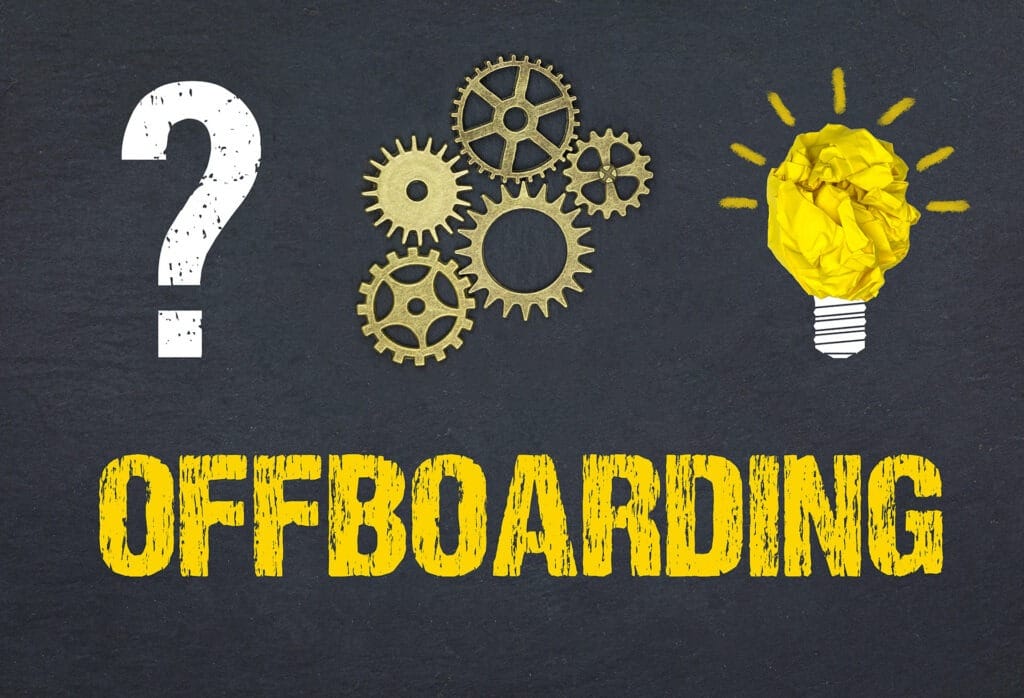The importance of offboarding
Offboarding is more than just the administrative handling of an employment relationship.
It is an opportunity to shape the departure in an appreciative manner and promote long-term relationships.

A successful process ensures:
- Knowledge retention: Handover of tasks and expertise to the team or successor.
- Reputation management: Positive feedback from departing employees strengthens the employer brand.
- Emotional appreciation: Respectful interaction is remembered and promotes good relationships, e.g. via alumni networks.
Steps of a professional offboarding process
Step 1: Termination phase
- Transparent communication: Discuss the reasons for leaving and clarify any unanswered questions. Make sure that no misunderstandings arise.
- Planning the handover: Create a plan for how tasks and projects will be handed over to colleagues.
Step 2: Knowledge transfer
- Documentation of knowledge: Collect important information, work processes and contacts that are relevant for the team.
- Mentoring the successor: Allow the departing employee to train their successor, if possible.

Step 3: Administrative processing
- Create a checklist: Regulate administrative details such as returning work equipment, switching off accesses and updating the personnel file.
- Clarity on legal issues: Discuss remaining vacation, severance pay and references.
Step 4: Final meeting
- Honest feedback: Use the exit interview to find out how satisfied the employee is and to identify potential for improvement.
- Constructive exchange: Keep the conversation positive and avoid conflict issues.

Step 5: Appreciation and farewell
- Show gratitude: Organize a farewell, e.g. a joint team breakfast or a personal gift to express appreciation.
- Maintain networks: Invite the departing employee to join alumni networks or LinkedIn groups.
Challenges in offboarding
- Emotional aspects: Leaving can be emotionally stressful, especially for long-term employees or difficult separations.
- Loss of knowledge: Without clear handover processes, valuable know-how can be lost.
- Lack of time: Offboarding is often neglected in hectic work phases.
Tips for successful offboarding
- Tip: Develop a standardized offboarding checklist that can be flexibly adapted.
- Tip: Train managers in dealing with departures to ensure sensitivity and professionalism.
- Tip: Use digital tools to make the process efficient, e.g. for exit interviews or task handovers.
- Tip: Involve departing employees in alumni programs to maintain long-term connections.
Conclusion
A professional offboarding process strengthens the corporate culture, protects against loss of knowledge and preserves relationships with former employees.
It offers companies the opportunity to gather valuable feedback and position their own employer brand positively.
By managing the departure as well as the entry, companies create a respectful and sustainable relationship culture that has an impact both internally and externally.
Successful offboarding is therefore not just an end, but also a new beginning – for the company and the employees.




